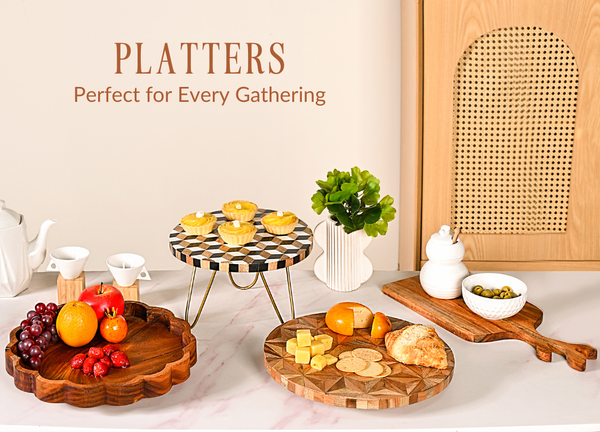Welcome back, Nestfam! We’re back with another great read. This time we’re addressing something that’s perhaps the most unaddressed, literally. You guessed it! Today we’ll be talking about the dull and drab corners of your home that beg to be included in the grand scheme of things. You know, the lonely foyer, the empty wall behind your television, and all those unoccupied spaces that contribute to a sense of spaciousness. We’ll cover some mind-blowing benefits of leaving this space untouched despite being tempted to decorate it. Let’s get started, shall we?

Understanding Negative Space
In interior design, negative or white space refers to an area of your interior layout that is intentionally left empty, giving your home some breathing room. This extra space is typically seen in high-traffic areas such as the living room or dining room, and around lofty furniture and other home decor accents. Without negative space, your home would virtually turn into an attic cluttered with a heap of things. Although quite underrated, this space plays a key role in achieving symmetry, balance, and organization.

Do you know what also helps keep clutter in check? Our stunning organizers, of course.
The Psychology of Negative Space
Gestalt Theory In Interior Design
The human brain is a fascinating entity, surprising everyone with its unique quirks. Drawing upon the brain’s tendency to perceive things uniquely, the Gestalt theory postulates that the human brain perceives visual information and elements as part of a complex system rather than as a single element. To enhance one’s spatial awareness and get a clearer picture of the environment, the brain automatically organizes elements into a unified whole. This is the same reason why we see faces in clouds, shadows, and the most unexpected places.
But why exactly does the brain do this? The simple reason is that the brain likes organization, deterring unpredictability and threat in every possible way. As per Gestalt’s principle of closure, the brain likes to fill in the gaps and see things as part of a whole. Let us give you a nice example. If you see a series of dots forming a triangle with one or two dots missing near the apex, you will most likely perceive it as a triangle rather than just dots.
So how does the concept of negative space play into this? Interior designers have applied this well-defined concept to their fields, intentionally leaving space blanks to prompt people to fill the spaces with their perceptions. The open spaces encourage people to organize all the elements and group them into a particular design, whether it is a minimalist Scandinavian interior decor style or a tropical decor style. This is exactly how interior design plays out in terms of a harmonious cohesive of different accents of the same style.
Difference Between Negative Space And Positive Space
While negative spaces are left unattended for some pretty good reasons as we discussed, positive space in interior design is the area that you design, whether it’s the space used for furniture installations, electronic appliances, decor objects, or anything under the sun. Think of it this way - a positive space feeds the negative space that then provides cues to your brain to piece everything together.
5 Benefits Of Having Negative Space In Your Layout
1. Visual Balance
Negative space helps you achieve visual balance and symmetry by providing some much-needed relief amidst the furniture and accents. It makes your home feel more spacious and well-proportioned.
2. Enhances Your Decor Style
White space lets your brain fill in the details and perceive the room as part of a bigger picture, thereby enhancing the aesthetics of your chosen decor style.
3. Improved Functionality
Negative space is a miracle worker if you want more functionality in your room, particularly in high-traffic areas. It leaves enough room for movement, allowing you to comfortably and conveniently navigate the space.

4. Aesthetic Appeal
It also makes your room feel less cluttered, enhancing its overall appearance. It makes the room appear brighter and promotes better air circulation, as well as the distribution of sunlight, contributing to a more inviting environment.
5. Flexibility
Negative spaces make it a breeze for you to rearrange your furniture and make changes to your room from time to time. The addition of new items becomes very easy without the risk of overwhelming your space as well.

Applying Negative Space In Interior Design
1. Minimalist Design
In minimalist design, negative space is crucial for creating balance and calmness. It’s the art of leaving certain areas in a room open, free of objects or decorations, to allow the space to breathe. The use of clean lines and simple forms emphasises the power of negative space, allowing focal pieces, like a statement chair or a single artwork, to stand out. By reducing visual clutter, negative space helps make a room feel more expansive and tranquil.
2. Colour And Texture
Negative space can also be achieved through the use of colour and texture. For example, using lighter or neutral shades on walls, ceilings, or floors can open up a room, giving it an airy feel. When combined with textures such as smooth walls or matte finishes, these spaces look even more expansive. The interplay of colours - like a muted backdrop with bold, contrasting elements - draws attention to the arrangement and creates visual interest without overwhelming the senses.

3. Furniture Arrangement
Furniture arrangements can take advantage of negative space by allowing breathing room between pieces. Instead of crowding furniture together, leaving space between couches, chairs, and tables helps to define each element and makes the space feel more open and organised. This layout technique encourages movement and flow while maintaining a sense of openness, making the room feel larger and more inviting.
4. Wall Decor
When it comes to wall decor, negative space allows art or design to take centre stage. For instance, a large empty wall or a sparse frame around an artwork draws attention to the piece itself while enhancing the perception of space. Simple wall-mounted shelves with minimalistic decor or even leaving walls untouched can create a visually appealing, balanced environment. The key is to use the walls sparingly, allowing the negative space to elevate the design rather than clutter it.
FAQs on Negative Space in Interior Design
1. How do I use negative space to my advantage?
The best way to make use of negative space is to leave it untouched. This will keep your room looking well-balanced, clean, and in harmony with other home decor components.
2. What are the effects of negative space?
Apart from enhancing the visual clarity of your room, it prompts you to perceive elements in unison with others, helps to declutter, and keeps your space looking fresh and refined.
Conclusion
Sometimes while focusing on things with which we intend to adorn our home, we leave out a few patches. We’re pretty sure you’ve understood why this oversight isn’t bad. Having cleared out the concept of negative space and its role in creating a balanced environment at home, we hope you can curate a home with visual symmetry and harmony. Backed by several science-baked reasons, the importance of this empty design is crucial for every interior.





















